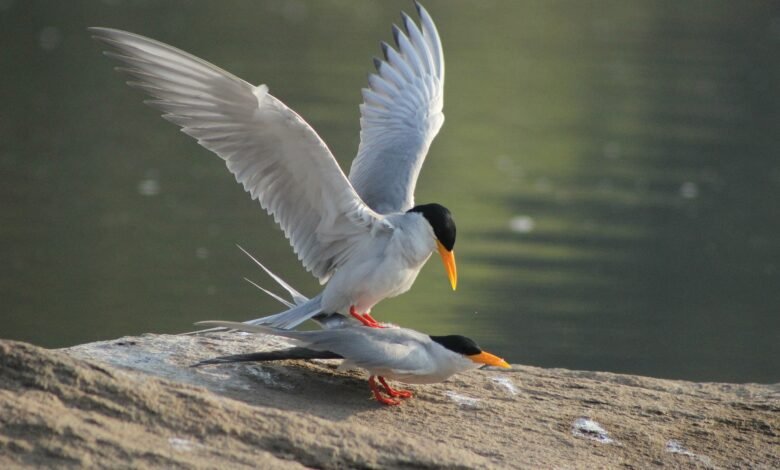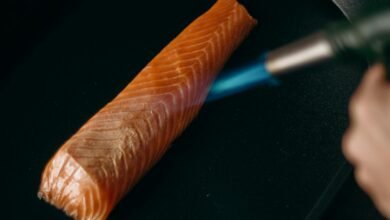How Do Birds Mate?: Unveiling Avian Romance Secrets

Birds mate through a process called copulation, where the male bird transfers sperm to the female bird’s reproductive tract. During copulation, the male bird mounts the female bird and their cloacas, or vent openings, come into contact.
The male then transfers sperm to the female, fertilizing her eggs internally. This process ensures the continuation of the species and the production of offspring. Birds have evolved various mating behaviors and rituals to attract mates and establish pair bonds, such as elaborate courtship displays, singing, and dancing.
These behaviors differ among bird species and can be influenced by factors such as habitat, season, and availability of resources. Understanding the mating behaviors of birds provides valuable insights into their reproductive strategies and evolutionary adaptations.
Introduction To Avian Mating
Bird mating is a fascinating process that varies among different avian species. From courtship displays to intricate rituals, birds use various methods to attract mates. Understanding how birds mate provides insights into their reproductive behaviors and the diversity of their strategies.
The Mystery Of Bird Reproduction
Bird mating behavior has long been a subject of fascination, as it involves a unique set of behaviors that differ greatly from those of other animals. One of the most interesting aspects of bird reproduction is the diversity of mating systems that exist among different species. While some birds are monogamous and mate for life, others engage in complex courtship rituals, mate with multiple partners, or form temporary breeding partnerships. In this post, we’ll explore the fascinating world of avian mating and shed some light on the mystery of bird reproduction.
Birds’ Unique Mating Behaviors
Birds have evolved a variety of unique mating behaviors that help them attract mates and ensure reproductive success. These behaviors can include elaborate courtship displays, vocalizations, and physical interactions. For example, male peacocks use their brightly colored feathers to attract mates, while male birds of paradise perform elaborate dances to impress females. Some species engage in aerial displays, while others build elaborate nests or offer gifts to potential mates.
One of the most interesting aspects of bird mating behavior is the role that females play in the selection process. In many species, females are the ones who choose their mates based on a variety of factors, including physical appearance, behavior, and the quality of their territories or nests. This has led to the evolution of some truly remarkable male traits, such as the bright colors and elaborate displays seen in many bird species.
In conclusion, the world of avian mating is a fascinating and complex one, with a wide range of behaviors and strategies employed by different species to ensure reproductive success. By studying these behaviors, we can gain a greater understanding of the diversity of life on our planet and the complex relationships that exist between different species.
Credit: www.quora.com
The Mating Call
The Mating Call in birds plays a crucial role in their reproductive process, serving as a form of communication between potential mates. Understanding the significance of their love signals can provide insights into the fascinating world of avian courtship.
Songs And Calls As Love Signals
Birds use a variety of vocalizations, such as songs and calls, to attract a mate and establish their territory. These love signals can vary in pitch, duration, and complexity.
Decoding The Language Of Love In Birds
Observing the intricate behaviors of birds can help us decipher the love signals they use to express their interest in potential partners. Understanding this unique form of communication enhances our appreciation for the beauty of avian courtship.
Courtship Displays: A Visual Spectacle
When it comes to the mating rituals of birds, courtship displays are a mesmerizing sight to behold. These displays, filled with dances and aerial acrobatics, are nature’s way of ensuring successful reproduction for these feathered creatures. Let’s take a closer look at the captivating courtship displays of birds and the various elements that make them truly spectacular.
Dances And Aerial Acrobatics
Birds have their unique ways of expressing their desire to mate, often involving intricate dances and breathtaking aerial acrobatics. These performances are not only visually stunning but also serve a purpose in attracting potential partners. Male birds, in particular, go to great lengths to impress their female counterparts with their agility and grace.
During these courtship dances, birds may engage in a variety of movements, such as hopping, spinning, and wing-flapping, all designed to showcase their physical prowess. Some species even perform coordinated routines, synchronizing their movements with precision. These displays are not only mesmerizing to watch but also serve as a way for birds to communicate their fitness and genetic quality to potential mates.
Feathers, Colors, And Flashing
Another fascinating aspect of bird courtship displays is the prominent role played by feathers, colors, and flashing. Male birds often have elaborate plumage, adorned with vibrant colors and intricate patterns. These striking features are not just for show; they play a vital role in attracting female birds.
The bright and eye-catching feathers act as visual signals, indicating the health, strength, and genetic superiority of the males. The more vibrant and well-maintained the plumage, the more likely it is to catch the attention of potential mates. Some bird species even have specialized feathers that can produce iridescent colors, creating a dazzling display when they catch the light.
Furthermore, certain bird species engage in flashing behaviors during their courtship displays. This involves rapid movements of their feathers or body parts, creating flashes of color that can be seen from a distance. These flashes serve as attention-grabbing signals, ensuring that the male bird stands out among its competitors and captures the interest of nearby females.
In conclusion, courtship displays in birds are nothing short of a visual spectacle. Through dances, aerial acrobatics, vibrant feathers, and flashing displays, birds showcase their physical abilities and genetic superiority to attract potential mates. Witnessing these mesmerizing performances reminds us of the incredible diversity and beauty found in the natural world.
Nest Building: A Foundation For Love
Birds are known to be one of the most fascinating creatures in the animal kingdom. They have unique characteristics that make them stand out from other animals. One of the most interesting behaviors of birds is their mating ritual. Birds mate to reproduce and continue their species. But, how do birds mate? Nest building is one of the essential components of bird mating. In this article, we will discuss how nest building plays a vital role in bird mating.
Choosing The Right Location
Birds are particular about the location of their nests. They choose a location that is safe and secure from predators. The location should also be suitable for the bird’s specific needs, such as protection from the elements. Birds also consider the availability of food and water when choosing a location. The right location ensures that the eggs will hatch successfully, and the chicks will grow healthy and strong.
Materials And Construction Techniques
The materials used in nest building are crucial for the bird’s comfort and safety. Birds use a variety of materials, such as twigs, leaves, grass, and mud, to build their nests. The construction technique used by birds depends on the species and the location of the nest. Some birds build their nests using intricate weaving techniques, while others use mud to create a sturdy foundation. The materials and techniques used in nest building ensure that the nest is strong enough to hold the eggs and keep the chicks safe.
In conclusion, nest building is an essential component of bird mating. Choosing the right location, materials, and construction techniques are crucial for the success of the mating process. Birds put a lot of effort into building their nests to ensure the safety and comfort of their offspring. Observing birds during the mating season can be a fascinating experience, and understanding their behaviors can help us appreciate these incredible creatures even more.
The Role Of Gifts In Avian Courtship
When it comes to avian courtship, the role of gifts is a fascinating aspect of the mating process. Birds engage in various forms of gift-giving as part of their courtship behavior, with these offerings playing a crucial role in the process of forming and strengthening pair bonds.
Food Offerings
Male birds often present food to females as part of their courtship ritual. This act serves as a demonstration of the male’s ability to provide for the female and potential offspring. Species such as the Northern Cardinal and the European Robin are known for this behavior, with the male offering seeds, insects, or other edible items to the female.
Nest Materials And Other Tokens
Some bird species use nest materials and other tokens as part of their courtship displays. This can include gathering and presenting twigs, feathers, or even shiny objects to the female. For instance, the Bowerbird constructs elaborate structures and decorates them with colorful objects to attract a mate. This behavior showcases the male’s ability to build a suitable nest and provides the female with an indication of his dedication and resourcefulness.

Credit: m.youtube.com
Physical Mating Process
Birds mate through a physical process involving the male mounting the female and transferring sperm through their cloacas. This mating behavior is often preceded by courtship displays and vocalizations, and is a vital part of the reproductive cycle for many bird species.
Cloacal Kiss: How Birds Physically Mate
During the physical mating process, birds engage in a unique behavior known as the “cloacal kiss.” This may sound unusual, but it’s a crucial aspect of avian reproduction. The cloaca is a multipurpose opening located at the base of a bird’s tail, which serves as the exit point for waste and the entry point for reproductive activities.
When birds mate, their cloacas come into contact, allowing for the transfer of sperm from the male to the female. The timing and frequency of mating can vary among bird species, influenced by factors such as breeding seasons, availability of resources, and social dynamics. Some birds mate for life, while others engage in seasonal or opportunistic mating. Let’s explore the physical mating process further to understand how birds reproduce.
Cloacal Kiss: The Moment Of Connection
When it comes to the physical act of mating, birds engage in a brief but significant moment known as the “cloacal kiss.” During this intimate encounter, the male and female align their cloacas, allowing for the transfer of sperm. This process ensures fertilization, which is essential for successful reproduction. Although the cloacal kiss may seem straightforward, it requires coordination and precise timing. Birds must align themselves correctly to ensure successful mating. The male often mounts the female from behind, positioning their cloacas in close proximity. Once contact is made, sperm is transferred from the male’s cloaca to the female’s, increasing the chances of fertilizing the eggs.
Timing And Frequency Of Mating
The timing and frequency of bird mating can vary greatly depending on the species and their specific reproductive strategies. Some birds engage in monogamous relationships, where they mate with the same partner for life. These avian couples often reinforce their bond through elaborate courtship displays, such as elaborate dances or vocalizations. On the other hand, some birds engage in opportunistic or seasonal mating. These birds may mate with multiple partners during a specific breeding season, aiming to maximize their chances of reproductive success. For these species, timing is crucial. They must synchronize their mating activities with the availability of resources, such as nesting sites and food, to ensure the survival of their offspring.
In conclusion, the physical mating process in birds involves the unique behavior of the “cloacal kiss,” where the male and female align their cloacas for the transfer of sperm. The timing and frequency of mating can vary among bird species, influenced by factors such as breeding seasons and social dynamics. Understanding the physical aspects of bird mating provides insights into the fascinating world of avian reproduction.
Raising Offspring Together
Birds exhibit remarkable teamwork in raising offspring together. From building nests to feeding and protecting their young, they share responsibilities to ensure the survival of their offspring.
Shared Responsibilities In Nurturing
- Both parents participate in nest building and maintenance.
- They take turns to incubate the eggs to keep them warm.
- After hatching, both parents feed the chicks with regurgitated food.
- They work together to defend the nest from predators.
Teaching And Protecting The Young
- Parents teach the young birds essential skills like flying and foraging.
- They warn their offspring of potential dangers in the environment.
- Adult birds fiercely protect their young from threats.
Monogamy And Polygamy In Birds
Birds mate either monogamously or polygamously depending on the species. Monogamous birds mate for life, while polygamous birds may mate with multiple partners. Courtship rituals, such as singing and dancing, are common in both types of mating.
Species With Lifelong Partners
Birds exhibit both monogamous and polygamous mating behaviors.
Some bird species form lifelong partnerships with a single mate.
This commitment ensures they raise offspring together.
Multiple Mates And The Reasons Behind It
Other bird species opt for multiple mates.
This strategy can increase reproductive success.
Males may seek multiple mates to spread their genes.
Conservation And The Impact On Mating
Habitat Destruction And Its Effects
Birds’ mating habits are disrupted by habitat loss.
Conservation Efforts To Protect Avian Romance
- Protected areas safeguard breeding grounds.
- Research helps understand mating behaviors.
- Restoration projects create ideal nesting sites.
Conclusion: The Future Of Avian Romance
Exploring the intricacies of avian courtship sheds light on how birds mate and form lasting bonds. As we unravel the mysteries of avian romance, we gain insight into the fascinating future of these feathered creatures’ relationships.
Birds are adapting to changing environments, affecting their mating behaviors.
Adapting To Changing Environments
- Birds adjust mating rituals based on environmental conditions.
- Climate change influences breeding patterns and mate selection.
The Ongoing Study Of Avian Mating Behaviors
- Research is crucial for understanding and conserving bird species.
- Scientists observe courtship displays and breeding strategies.

Credit: blog.mybirdbuddy.com
Frequently Asked Questions
How Do Birds Choose Their Mates?
Birds choose their mates based on various factors such as courtship displays, plumage, and vocalizations. Some species also engage in elaborate dances or aerial displays to attract a mate. Once a pair forms, they may engage in mutual preening and other bonding behaviors.
When Do Birds Mate?
The timing of bird mating varies by species and location. Many birds mate during the spring, taking advantage of increased food availability and longer daylight hours. However, some species may mate at other times of the year, depending on their migratory patterns and environmental factors.
What Is The Mating Ritual Of Birds?
Bird mating rituals can be elaborate and fascinating to observe. They may involve courtship displays, songs, dances, or aerial acrobatics. In some species, males may bring food offerings to females as part of the courtship process. These rituals are important for pair bonding and reproduction.
How Do Birds Build Their Nests For Mating?
Birds use a variety of materials to build their nests, including twigs, grass, mud, and feathers. The construction process is often a joint effort between the male and female, with each partner contributing to the nest-building activities. The nest provides a safe and secure environment for raising offspring.
Conclusion
The mating rituals of birds are diverse and fascinating, reflecting their unique adaptations and behaviors. Understanding these mating behaviors provides insight into the complex lives of birds and their role in the natural world. By appreciating and respecting these behaviors, we can contribute to the conservation of bird species and their habitats.





